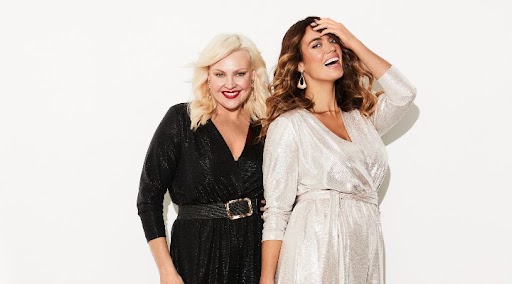Plus-size labels will take the runway in a dedicated showcase during Afterpay Australian Fashion Week (AAFW) in May, headlined by international supermodel Robyn Lawley. Six designers will come together in The Curve Edit showcase, including 17 Sundays, Saint Somebody, Embody Women, Vagary the Label, Harlow, and Zaliea, each offering sizes 12-26. “In my years of being a custodian of Australian fashion, I can say that the diverse nature of talent I’m seeing is better than ever. I ca
. I can safely say that this is not a trend, but a fundamental shift in the event’s history,” IMG’s Natalie Xenita told Inside Retail.
The Curve Edit is being curated by Bella Management founder and former plus-size model Chelsea Bonner, who started her talent agency in 2002 to challenge the traditional boundaries of beauty.
“We want to ensure that models whose sizing is reflective of over 80 per cent of Australian women have the opportunity to walk the runway and show that women of every size deserve to be considered and embraced as a forceful and financial demographic in mainstream fashion,” Bonner said.
“Our hope is that doing so will encourage the future of extended sizing in fashion and celebrate the designers who have embraced our mission.”
A slow evolution
In recent years, AAFW has focused on slowly creating a more diverse environment. Last year, Indigenous designers were celebrated during two showcases and for the first time, people with disabilities featured on the runway. This year, AAFW will open with a Welcome to Country, feature a show from Indigenous Fashion Projects and close with First Nations Fashion + Design, which will also host a panel discussion during the week. Meanwhile, fashion for people with disabilities will be showcased in The Adaptive Edit, featuring collections from three local labels.
Similarly, local fashion brands have slowly begun to size inclusively. Womenswear brands Aje, Bianca Spender, and Bec & Bridge now offer sizes 16 and 18. However, compared with the US market, where larger models were regularly on the runway recently at New York Fashion Week, Australia is behind when it comes to size diversity.
A common complaint mainstream designers make when deciding to limit their size ranges is that items above a size 14 simply do not sell as well as the smaller sizes.
However, former model and Embody founder Natalie Wakeling is critical of this so-called challenge.
“They really don’t do it justice because they just don’t have the passion like we do. We’ve lived it, and we’ve breathed it,” she explained. “They’re not passionate about it, and they’re only doing these little drop capsule collections that offer a very limited style range above a size 14. Then they turn around and go, ‘I told you. It didn’t work. People didn’t buy it, it wasn’t successful.’ And I think that’s why curve fashion has never really taken off here because it comes across as a bit tokenistic.
“AAFW is a really great starting point for us to show that we are capable and we can do what they need us to do to represent our brands on an international stage.”
The future of plus-size fashion
Fashion Week events in Australia have come under fire in the past for their lack of size representation, drawing criticism from industry pundits. Bonner and Wakeling are aware that not everyone will be satisfied with The Curve Edit; however, both hope the showcase is just the start of size diversity becoming a permanent part of not only AAFW, but the industry as a whole.
“I’d like us to get to the point where curve fashion isn’t a big deal, where it wouldn’t be a big deal to see a curve model on the front cover of a magazine regularly or in the middle of the glossy pages, or curvy celebrities interviewed for their styling advice. We are so size-ist here in Australia, and we’re not progressive,” Wakeling said.
“We’re not out here to be in your face. We just actually want to show that larger women can look just as fabulous and glamorous and they deserve to wear the same beautifully made garments our straight-sized friends get to wear. I don’t think it’s about shoving it in people’s faces. This is just everyday life. If you’re a size 16 or 26, you need to wear clothes. And you don’t want to wear bad clothes.”
Meanwhile, Bonner would like to see mainstream fashion brands not only embrace extended sizing, but also feature plus-size models in their marketing campaigns. It’s a missed opportunity for these retailers, she said. If curvy customers can’t see that they are being catered to by these brands, they won’t know to shop with them.
“A lot of designers who do extend their size ranges don’t represent that [in their campaigns], then they wonder why they’re not selling through those ranges. It’s because people don’t even know they go to that size,” Bonner pointed out. “From a business [standpoint], I’ve never been able to understand it. It is completely illogical to market to only 20 per cent of the population. It just doesn’t make any sense whatsoever.
“We need to see a lot more inclusion of size-diverse models in advertising in order for it to sell through. At the end of the day, that’s what everyone’s trying to do. I love fashion, I was born into fashion. I want everyone to succeed and I don’t want to see another label go down. We’ve seen far too many go under in the last five years, it’s been awful to watch. But I really do feel like if they had taken the temperature of the actual humans purchasing the products, that might not have happened.”

